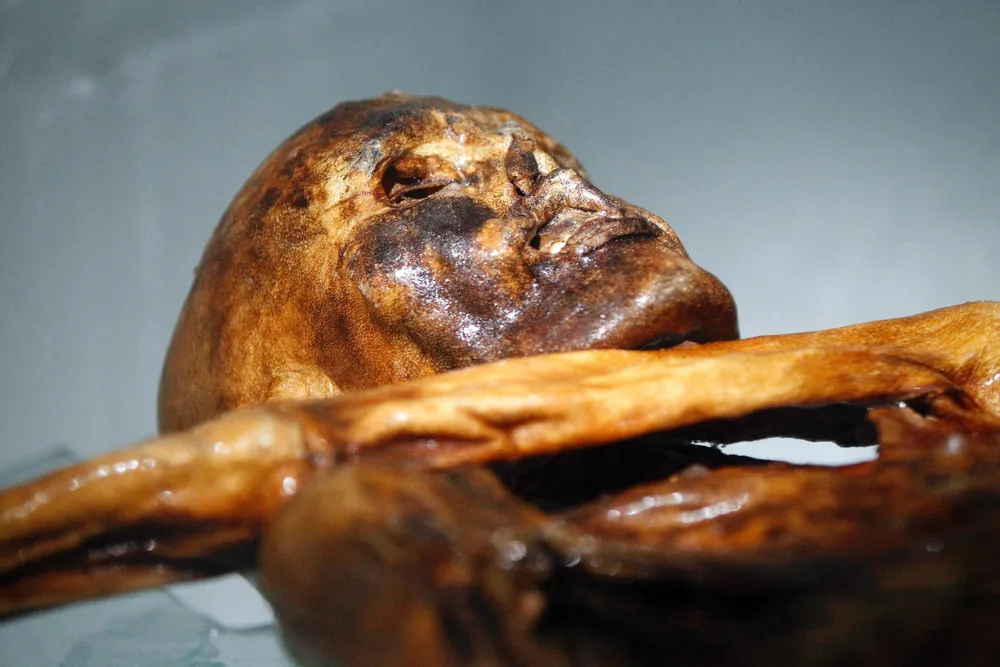|
This file photo taken on February 28, 2011 shows the mummy of an iceman named Oetzi, discovered on 1991 in the Italian Schnal Valley glacier, on display at the Archaeological Museum of Bolzano, Italy, during an official presentation of the reconstruction. When police heard about the frozen corpse up in the Alps in September 1991, they opened a criminal probe. Murder it was, but the crime was rather old – and the ultimate cold case. The dead man, found by hikers 25 years ago this week a snowball’s throw from the Austrian-Italian border and put in a wooden coffin at a nearby police station, turned out to have died more than 5,000 years ago. Mummified in the ice, “Otzi”, as he was later nicknamed, was a sensation, providing invaluable scientific insights that a quarter of a century later show no sign of abating. To put it into perspective, when Otzi died – around 3,350-3,100 B.C. – Stonehenge in England and the first Egyptian pyramids were still hundreds of years from being built. He lived during the Late Neolithic or Copper Age when mineral extraction and copper smelting, which spread to Europe from the Near East, was fundamentally transforming human society. Perhaps the resulting upheaval explains his still mysterious death. That he came to a sticky end was confirmed by the arrowhead lodged in his shoulder, only found in 2001, showing he had been shot from behind. He would have bled to death in minutes and was possibly finished off with a whack on the head. He had at least eaten a large meal including barbecued ibex around 12 hours earlier, the contents of his stomach showed. And his untimely demise high in the mountains meant for scientists that he was incredibly well-preserved, allowing detailed studies. Unlike other ancient mummies, Otzi is “damp”, meaning there is still humidity in his cells and his body is untouched by funeral rites. Egyptian specimens are generally without brains and other organs. The findings include that Otzi was lactose intolerant and genetically predisposed to heart disease, as shown by his hardened arteries, something thought of before as a modern phenomenon. The 30 types of pollen in his intestines and the isotopic composition of his tooth enamel suggest he lived just south of the Alps. A conference in Bolzano where the latest findings will be revealed, including on the iceman's health, the contents of his stomach and further clues on his murder will take place on September 19, 2016, 25 years after the discover of the mummy. (Photo by Andrea Solero/AFP Photo)
|

